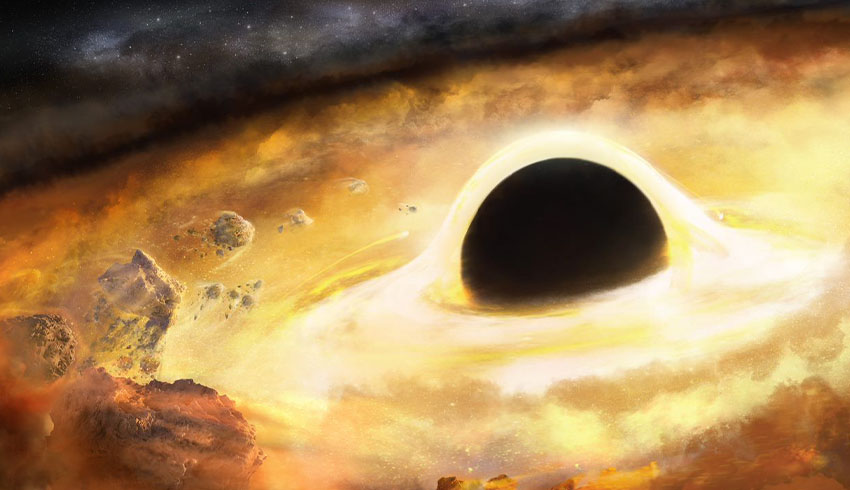Since black holes and black hole mergers are completely dark, these events are invisible to telescopes and other light-detecting instruments used by astronomers. However, theorists have come up with ideas about how a black hole merger could produce a light signal by causing nearby material to radiate.
Now, scientists using Caltech's Zwicky Transient Facility (ZTF) located at Palomar Observatory near San Diego may have spotted what could be just such a scenario. If confirmed, it would be the first known light flare from a pair of colliding black holes.
The merger was identified on 21 May 2019 by two gravitational wave detectors – the National Science Foundation's Laser Interferometer Gravitational-wave Observatory (LIGO) and the European Virgo detector – in an event called GW190521g.
That detection allowed the ZTF scientists to look for light signals from the location where the gravitational wave signal originated. These gravitational wave detectors have also spotted mergers between dense cosmic objects called neutron stars, and astronomers have identified light emissions from those collisions.
Daniel Stern, co-author of the new study and an astrophysicist at NASA's Jet Propulsion Laboratory in southern California, a division of Caltech, explained, “There's a lot we can learn about these two merging black holes and the environment they were in based on this signal that they sort of inadvertently created. So the detection by ZTF, coupled with what we can learn from the gravitational waves, opens up a new avenue to study both black hole mergers and these disks around supermassive black holes."
The ZTF results are described in a new study published in the journal Physical Review Letters.
The authors hypothesise that the two partner black holes, each several dozen times more massive than the sun, were orbiting a third, supermassive black hole that is millions of times the mass of the sun and surrounded by a disk of gas and other material.
When the two smaller black holes merged, they formed a new, larger black hole that would have experienced a kick and shot off in a random direction. According to the new study, it may have plowed through the disk of gas, causing it to light up.

